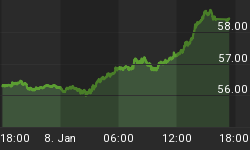Today the NAR released the Pending Home Sales Index, a measure of expected sales on existing homes. The Econoday Consensus Estimate was for a 0.5% rise in a range of 0.0 to 2.4%.
No economist got the sign correct. The index unexpectedly declined 0.9% month-over-month, well below even the lowest economist's estimate.
Pending home sales in November declined for the third time in four months as buyers continue to battle both rising home prices and limited homes available for sale. The pending home sales index was down 0.9 percent but up 2.7 percent from a year ago. Modest gains in the Midwest and South were offset by larger declines in the Northeast and West.
November's dip continued the modestly slowing trend seen ever since pending sales peaked to an over nine year high back in May. NAR said that home prices rose too sharply in several markets, there were mixed signs of an economy losing momentum and waning supply levels all contributed to headwinds in recent months despite low mortgage rates and solid job gains.
The Northeast decreased 3.0 percent but is still 4.3 percent above a year ago. In the Midwest the index rose 1.0 percent and and is now 4.1 percent above November 2014. Pending home sales in the South increased 1.3 percent and are 0.5 percent higher than last November. The index in the West declined 5.5 percent but remains 4.5 percent above a year ago.
Recent History Of This Indicator
Pending home sales are expected to rise a solid 0.5 percent in November vs. a softer 0.2 percent rise in October. The expected gain would point to a badly [needed?] increase for final sales of existing homes which were depressed in November by new disclosure rules and related time delays.
About that "Know Before You Owe" Theory
Ahead of the release, Bloomberg parroted the NAR line that disclosure rules affected November existing home sales.
I wrote about the rule changes on December 22, in Existing Home Sales Plunge 10.5%, NAR Blames "Know Before You Owe"; What's the Excuse for Last Month?
The rule change, dubbed "Know Before You Owe", was a simplification of disclosure rules. It became effective on October 3. I failed to see how a decline in November was related to simplification of rules that actually took effect the previous month.
Bear in mind, that the NAR called a dip in October "disturbing" but in November placed the entire blame on the "Know Before You Owe" rules.
If the rule change theory was correct, delays in November would have pushed into expected closings in December. The Econoday economist guessing a rise of 2.4% probably believed that theory. Instead, we see a plunge.
Of course the index itself could be wrong, so we have to wait for the actual December numbers. But as it sits, the most likely thing is blaming "Know Before You Owe" was simply a bad call.
Today, the NAR blames "home prices that rose too sharply in several markets". I find that a much better theory, especially if we replace the word "several" with the word "most".
What about the NAR's perpetual "never a better time to buy" thesis? Is the NAR willing to toss that theory on the ash heap of history?
Don't hold your breath.
















